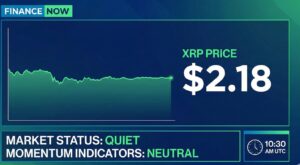Over the years, blockchain technology has gained a reputation for its security. More so, cryptocurrencies are globally recognized as digital currencies that are significantly secure. However, whilst the security of blockchain and cryptocurrencies has rarely been questioned, little is known about the process that guarantees the security. The process could either be proof of stake (PoS) or proof of work (PoW). Thus, in this article, we will discuss both the proof of stake and proof of work systems and how they differ.
What is Proof of Work?
Proof of work is a consensus mechanism that is tied to blockchain technology. The way blockchain technology works are that as more information is added to the system, new blocks have to be created to hold the information. However, these blocks have to be validated before they are added to the system. Under the proof of work mechanism, miners compete to solve highly complex mathematical puzzles. The miner that solves the puzzle faster gets to verify the transaction and create a new block. Noteworthy, every solution to a mathematical puzzle in the system must be validated by other miners. Afterward, the miner is rewarded with a fixed amount of crypto.
Proof of work is the first and most common consensus mechanism. It was first adopted in 2009 as a method of validating Bitcoin transactions. The primary rationale behind a consensus mechanism is the protection of the system. For example, the proof of work mechanism requires complex mathematical puzzles because it ensures that the computational power required to verify transactions is enough to discourage potential hackers from manipulating the blockchain system.
What is Proof of Stake?
Proof of stake is significantly different from proof of work. Unlike PoW which requires miners to solve puzzles before they can validate transactions, proof of stake only requires that validators should “stake” coins before they can be chosen as miners. In this case, only persons that hold a minimum number of coins can be chosen as validators. After coins are staked, validators are randomly chosen and transactions are verified. Proof of stake has not been widely adopted yet. There are reports that Ethereum will switch to PoS by the summer of 2022. Immediately a transaction is verified by the chosen validator, the verification must be attested to by other validators.
The Difference Between Proof of Work and Proof of Stake
While they are both consensus mechanisms, PoW and PoS are significantly different. On one hand, PoW requires solving mathematical puzzles while PoS only requires that validators stake their coins and verify transactions.
Also, proof of work comes at a huge environmental cost. The high computational power that it requires often consumes volumes of energy. This is highly dangerous to the environment, and it raises concerns on issues like climate change. On the other hand, proof of stake consumes significantly lesser energy given that a validator is picked from the beginning of the process. Thus, miners do not have to compete and consume energy as it applies with PoW.
Conclusion
While PoW and PoS are currently the only consensus mechanisms on the blockchain network, it is expected that more mechanisms would be developed as blockchain adoption continues to grow. These mechanisms would solve issues like environmental pollution and the tendency of attacks.




























